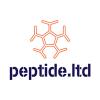Excellent study thats a good news.It is recent, hopefully soon we begin to see more studies about LLLT+CoQ10+PQQ or LLLT+C60
Also, without intending to advertise a product or make any kind of commercial profit, I will leave this here for those interested.The ebay seller who had the low cost 100 pills of PQQ+CoQ10 combo has a site where he sells his products, I asked him by ebay for the product. I've bought mine there through Paypal
I mentions this because it seems he is no longer selling that product on ebay.
The site has other great products at an excellent cost.The site: http://herbern.webs.com
You have 6 posts and post to a .webs store, I would not trust that at all. They claim to be a company, but use outlook as their email, don't even have their own website (.webs is free) and I don't see any CoAs.
Yes, you're right, I was also suspicious about the site. The same person on ebay sent me their website when I asked him about the PQQ+CoQ10 caps, after some thought I decided to take the risk, if I receive the product successfully that would be a good sign, I will upload a photo and write a comment if I feel an effect.
I think that a moderator may edit my post and just leave a statement like this: "contact the seller on ebay asking for his website at your own risk" and delete the link.... thats would be better for the safety of the members. (or delete the entire message)
On the other hand it seems appropriate that your distrust of the website. But your distrust me because of the number of my posts seems a bit exaggerated.




















































